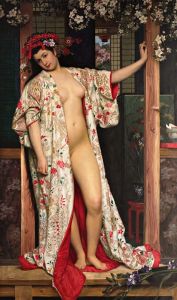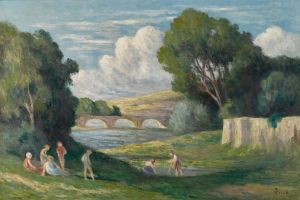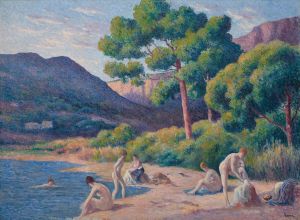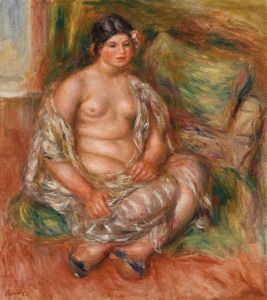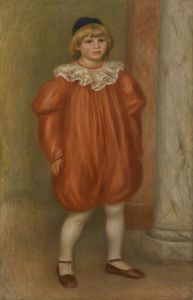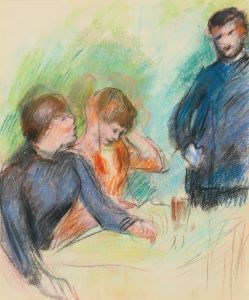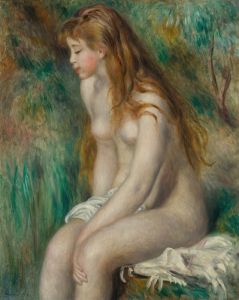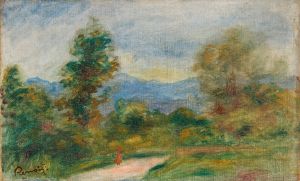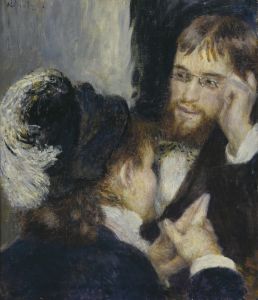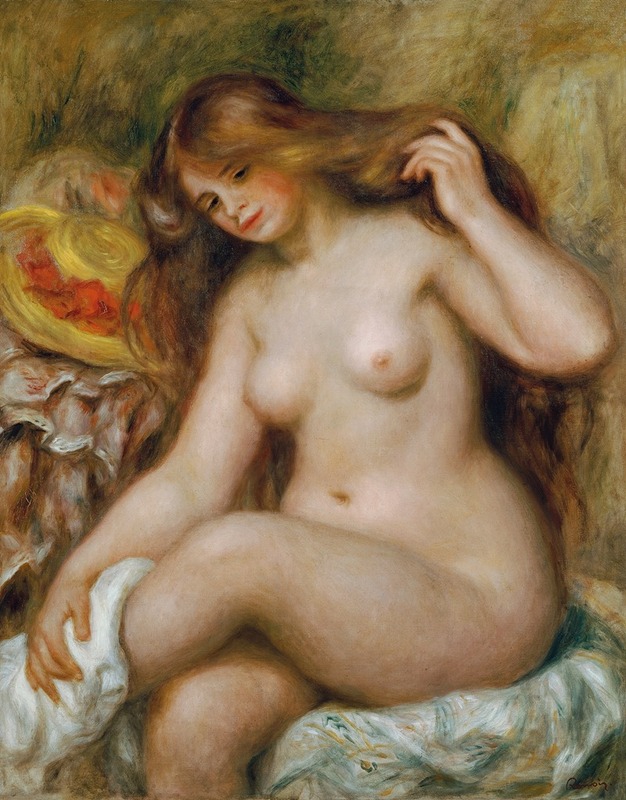
Badende mit blondem, offenem Haar
A hand-painted replica of Pierre-Auguste Renoir’s masterpiece Badende mit blondem, offenem Haar, meticulously crafted by professional artists to capture the true essence of the original. Each piece is created with museum-quality canvas and rare mineral pigments, carefully painted by experienced artists with delicate brushstrokes and rich, layered colors to perfectly recreate the texture of the original artwork. Unlike machine-printed reproductions, this hand-painted version brings the painting to life, infused with the artist’s emotions and skill in every stroke. Whether for personal collection or home decoration, it instantly elevates the artistic atmosphere of any space.
Pierre-Auguste Renoir, a prominent French artist and a leading figure in the development of the Impressionist style, is renowned for his vibrant light and saturated color, often focusing on people in intimate and candid compositions. One of his notable works is "Badende mit blondem, offenem Haar," which translates to "Bather with Blonde, Loose Hair." This painting exemplifies Renoir's fascination with the human form and his ability to capture the beauty and sensuality of his subjects.
Renoir's work during the late 19th century often explored themes of leisure and the human figure, particularly focusing on women. "Badende mit blondem, offenem Haar" is a testament to his interest in these themes, depicting a female bather with flowing blonde hair. The painting is characterized by Renoir's signature brushwork, which is both fluid and expressive, capturing the softness of the skin and the play of light on the figure. The use of light and shadow in this painting highlights the curves and contours of the woman's body, emphasizing her natural beauty and the relaxed, serene atmosphere of the scene.
The subject of the bather was a recurring motif in Renoir's work, reflecting the broader Impressionist interest in capturing modern life and the fleeting moments of everyday existence. Renoir's bathers are often depicted in natural settings, such as gardens or by the water, which allowed him to explore the effects of natural light and the interplay of colors in the open air. This approach was central to the Impressionist movement, which sought to break away from the rigid structures of academic painting and instead focus on the sensory experiences of the world.
"Badende mit blondem, offenem Haar" is a fine example of Renoir's ability to blend the Impressionist emphasis on light and color with a more traditional focus on the human form. While many of his contemporaries moved towards more abstract representations, Renoir maintained a commitment to the depiction of the human figure, which he considered to be the most important subject in art. His bathers, in particular, are celebrated for their sensuality and the way they capture the joy and beauty of life.
Renoir's technique involved the use of loose brushstrokes and a vibrant palette, which gave his paintings a sense of immediacy and movement. In "Badende mit blondem, offenem Haar," the soft, diffused light creates a warm and inviting atmosphere, drawing the viewer into the scene. The painting's composition is carefully balanced, with the figure positioned in a way that guides the viewer's eye across the canvas, allowing them to appreciate the nuances of color and form.
Throughout his career, Renoir's work was met with both critical acclaim and criticism. While some praised his innovative use of color and light, others found his focus on beauty and sensuality to be frivolous. Despite this, Renoir remained committed to his artistic vision, and his work has since become celebrated for its contribution to the Impressionist movement and its enduring appeal.
"Badende mit blondem, offenem Haar" is a testament to Renoir's skill as a painter and his ability to capture the essence of his subjects. The painting continues to be admired for its beauty and its representation of the Impressionist ideals of capturing the momentary effects of light and color. Renoir's legacy as a master of the human form and a pioneer of modern art remains influential, and his works continue to be studied and appreciated by art enthusiasts around the world.





